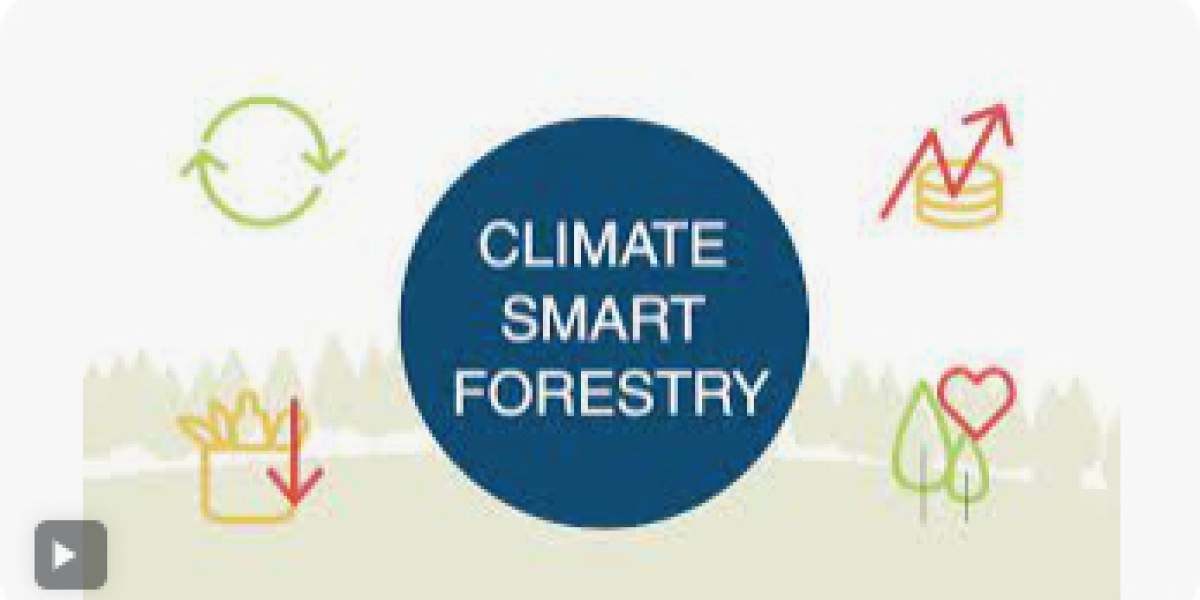Title: What Is Climate-Smart Forestry? - Alabama Cooperative Extension System
Topics:
- Introduction
- Forest Adaptation
- Forest Mitigation
- Sustained Production and Income
- Summary
- Additional Resources
[Main Heading]
What Is Climate-Smart Forestry?
[Content]
Climate-Smart Forestry (CSF) offers a natural climate solution to the rise of carbon dioxide (CO2) in the atmosphere. Benefits can range from reduced fossil-fuel use to increased forest biodiversity—while continuing to generate revenue for forestry operations.
Figure 1. The three objectives of Climate-Smart Forestry: adaptation, mitigation, and sustainability
Climate-Smart Forestry (CSF) is an approach to forest management that supports traditional practices to enhance forest growth, such as planting, thinning, and harvesting, along with modern objectives for carbon storage and ecosystem resilience. CSF is characterized by three main objectives (figure 1): (1) forest adaptation and resilience, (2) increased forest mitigation potential, and (3) sustainably ensured production and income.
To achieve the benefits of CSF, stakeholders need to understand CSF fundamentals. The good news is that CSF does not involve reinventing the wheel. Each of the objectives can be incorporated harmoniously with ongoing forestry practices.
[Topic 2: Forest Adaptation]
Forest Adaptation
Proactive management increases a forest’s ability to adapt and develop greater resilience to disturbance. In an unmanaged forest, adaptability is left to chance.
As CO2 continues to increase in the atmosphere, research indicates that most forestland in the southern United States will experience increased temperatures, growing-season precipitation, severe weather events (hurricanes, floods), and insect infestation. To anticipate such changes, forest landowners must engage in proactive management that supports forest health and vitality.
Proactive forest management typically increases stand growth and economic returns. For example, traditional silvicultural tools, such as thinning, prescribed fire, and planting, enhance forest health, vitality, and revenue stream. Silvicultural tools also help support ecosystem services such as biodiversity, erosion control, drinking-water filtration, and air quality.
Thinning for adaptation is beneficial in different forest types. Timely thinning in an even-aged southern pine stand can increase tree vigor, improving resilience to drought events and insect attacks. In a pine hardwood stand, selective thinning can increase resource availability for drought-tolerant oaks and increase biodiversity and foraging opportunities for wildlife. Similar biodiversity and foraging results can be found when thinning a Coastal Plain longleaf pine stand to improve stand health and productivity and promote reproduction.
Prescribed fire is useful for a changing climate in many southern forests. Prescribed fire can create multicohort and multiage stands more resistant to insect outbreaks, drought, and hurricanes. Low-intensity fire can have similar results to thinning, encouraging the regeneration of fire-adapted and drought-tolerant longleaf and shortleaf pine.
If softwood or hardwood stocking is insufficient for natural regeneration, planting is helpful to jumpstart regeneration. Though more costly than natural regeneration, planting helps to ensure desired outcomes for stand regeneration and stand production. Planting also allows the appropriate species to be selected for a specific site to reduce potential insect and disease outbreaks.
[Topic 3: Forest Mitigation]
Forest Mitigation
Figure 2. Sustainable forest management and forest carbon cycle with working forests (sustainably managed to produce forest products) and old forests
Mitigation focuses on increased stand growth and forest products. More forest growth leads to more forest carbon storage and potentially more carbon accumulation in timber products, lowering atmospheric CO2 (figure 2). The key to increasing carbon storage is active forest management.
Research shows that a stand with multiple harvests over 100 years stores additional carbon compared to a nonharvested stand over the same time. This difference is because a stand harvested three times over 100 years will produce three cohorts of fast-growing trees and long-lived wood products such as sawtimber. For example, standard southern pine practices that encourage aboveground growth, such as site preparation, weed control, and thinning, result in greater revenue and carbon storage in forest stands. Carbon, productivity, and revenue also can be accelerated in hardwood-dominated stands with thinning; however, carbon accumulation, tree productivity, and income likely will be lower than in a comparable pine plantation.
Sawtimber, pulpwood, and bioenergy products all help to store carbon. Sawtimber products typically store the most carbon due to trees being larger before harvest and then being used to produce long-lived timber products. In turn, sawtimber products, such as dimensional lumber, plywood, oriented strand board (OSB), and cross-laminated timber (CLT), store carbon in home framing and furniture items (figure 3). Pulp and paper products can even store carbon. Research has shown that if fiber-based pulp and paper products replace single-use plastics, greater carbon storage can occur, and fossil fuel consumption will decrease.
[Topic 4: Sustained Production and Income]
Sustained Production and Income
Sustainable forest management ensures continued production and income while maintaining forest health and resilience. By balancing the needs of the ecosystem and the demands for timber and other forest products, sustainable forestry practices can be achieved.
One key aspect of sustained production and income is the integration of forest management with other land uses. This includes considering the needs of wildlife habitat, water quality, recreation, and aesthetics. By incorporating these considerations into forest management plans, landowners can maximize the benefits of their forests while still meeting their economic objectives.
Forest certification programs, such as the Forest Stewardship Council (FSC) and the Sustainable Forestry Initiative (SFI), provide guidelines and standards for sustainable forest management. These certifications help to ensure that forests are managed responsibly, benefiting both the environment and the economy.
Additionally, exploring alternative income opportunities can further enhance sustained production and income. This can include activities such as agroforestry, carbon offset projects, and ecotourism. By diversifying income sources, forest landowners can adapt to changing market conditions and increase the resilience of their operations.
[Topic 5: Summary]
Summary
Climate-Smart Forestry (CSF) offers a holistic approach to forest management that addresses the challenges posed by climate change. By focusing on forest adaptation, mitigation, and sustained production and income, CSF aims to enhance ecosystem resilience, reduce carbon emissions, and support the economic viability of forestry operations.
Through proactive management practices such as thinning, prescribed fire, and planting, forest landowners can increase their forests' ability to adapt to changing climate conditions. These practices also contribute to increased forest productivity, carbon storage, and biodiversity.
By integrating sustainable forest management principles and certifications, landowners can ensure the long-term health and productivity of their forests while minimizing the environmental impact. Exploring alternative income opportunities further enhances the economic sustainability of forestry operations.
[Topic 6: Additional Resources]
Additional Resources
For more information on Climate-Smart Forestry and sustainable forest management, please refer to the following resources:
- "Climate-Smart Forestry: A Toolkit for Forest Managers" - Alabama Cooperative Extension System
- "Sustainable Forest Management Practices" - Forest Stewardship Council
- "Sustainable Forestry Initiative Standards and Guidelines" - Sustainable Forestry Initiative
These resources provide valuable guidance and insights into implementing climate-smart practices and ensuring the long-term sustainability of forest ecosystems.






